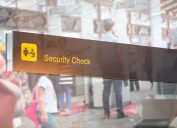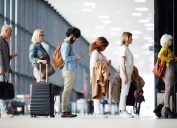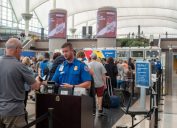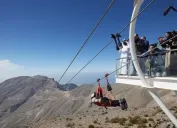TSA Is Under Fire for a Controversial Change to Airport Security
The new technology could be at all U.S. airports as soon as next year.
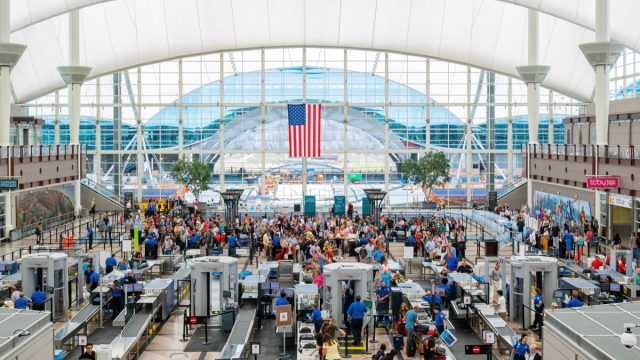
Getting through the Transportation Security Administration (TSA) line at airports can be one of the most stressful aspects of your travel experience. Even though most of us understand it as a necessity to keep flights safe, trying to sort through what items we need to remove from our carry-on bags (and clothing we need to remove from our person) can be anxiety-inducing—and that's made all the worse by policies that seem different at every airport. In fact, TSA does continue to update the security process, mostly to expedite the experience, but not all changes come without controversy. Read on to learn why experts are sounding the alarm about the latest TSA practice.
READ THIS NEXT: TSA Is Making Another Major Change to Airport Security.
New security measures have been rolled out.
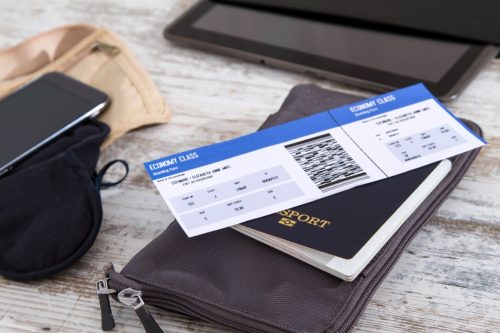
While TSA practices do sometimes vary, the basics are always the same no matter which airport you're at: You wait (sometimes longer than you'd like), show your ID and boarding pass to the TSA officer, and put your carry-on, shoes, and the like on the conveyor belt.
Travelers at some airports, however, have had different experiences at the security checkpoint, thanks to Credential Authentication Technology (CAT), which allows passengers to have their identity confirmed without pulling out a boarding pass. The machines scan your photo ID and then compare that with the Secure Flight database, which contains the names of all ticketed travelers for a 24-hour period, as Lorie Dankers, a TSA spokesperson, told Condé Nast Traveler.
TSA has since rolled out the next generation of these machines at Denver International Airport (DEN), dubbing them "state-of-the-art identity verification technology" in a press release.
The new tech doesn't have everyone's support.

Per the release, the CAT-2 adds an additional layer of security by taking "a real-time photo of the traveler," using your actual face as your ID to match with an "identification credential," noting that travelers can present state-issued digital IDs via their iPhone's Apple Wallet app. Currently, Arizona, Maryland, and Denver are the only three states to offer digital IDs.
According to The Washington Post, TSA is taking things a step further with a pilot program that compares your live photo to photos that already exist in a government database, typically from passports.
The outlet called the process "more invasive," because the system uses facial recognition to confirm that you are who you say you are. The practice is currently only available at select airports for those with TSA PreCheck or Global Entry, and must be requested from Delta Air Lines, The Washington Post reported.
But even in its limited scope, not everyone is on board with facial recognition technology.
RELATED: For more up-to-date information, sign up for our daily newsletter.
Facial recognition is already present at 16 airports.
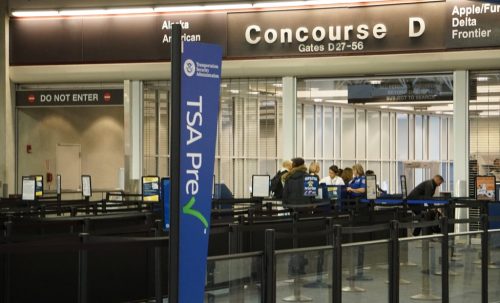
According to The Washington Post, TSA has been "quietly testing" the technology at 16 U.S. airports to "improve security and possibly also efficiency," with facial recognition piloted at Ronald Reagan Washington National Airport in 2020 amid the height of the COVID-19 pandemic. This technology used the "one to one" system that compares your face to your ID, with a TSA officer giving the official go-ahead.
To learn more about the tech and how it could affect civil rights, The Washington Post spoke with Jason Lim, who helps run the CAT-2 program for TSA, and a critic of facial recognition, Albert Fox Cahn, who founded the Surveillance Technology Oversight Project (STOP).
Lim called the facial recognition process a "security enhancement" and added that travelers don't need to worry about the effects of little changes in their appearance (think a haircut or a beard). But data hasn't been presented on how often false matches occur, which some consider problematic, as research has shown that false matches can occur more often with people of color.
The Washington Post reports that these numbers will likely be released when TSA goes to the Department of Homeland Security to ask that all U.S. airports use facial recognition systems in 2o23.
"I am worried that the TSA will give a green light to technology that is more likely to falsely accuse black and brown and nonbinary travelers and other groups that have historically faced more facial recognition errors," Cahn told the outlet.
You don't have to participate if you don't want to.
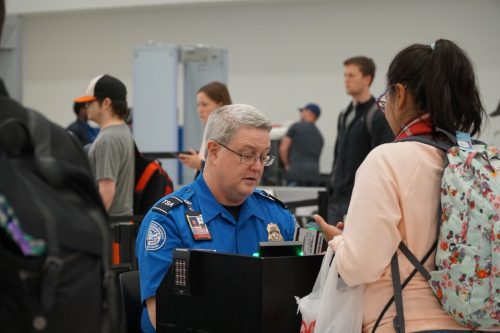
If you're wondering whether you'll be asked to smile for the camera on your next trip to the airport, rest assured that you aren't required to do so.
TSA confirmed that you can opt out of this process and undergo a different identity verification process, also assuring travelers that photos are never saved or used for purposes beyond immediate verification. The Washington Post confirmed with TSA that facial recognition isn't used for law enforcement, and that scans won't be used to build a new database of facial IDs.
Lim told the newspaper that the tech isn't mandated and travelers won't have a "derogatory experience" if they choose to exercise this right. "Those who do not feel comfortable will still have to present their ID—but they can tell the officer that they do not want their photo taken, and the officer will turn off the live camera," he said.
At the same time, most travelers don't feel inclined to make themselves look suspicious or slow down the security process—which could contribute to pressure to opt in. Cahn also asserts that while facial recognition is optional in its introductory phase, it may become "standardized and nationalized and eventually compulsory," like other biometric programs. "There is no place more coercive to ask people for their consent than an airport," Cahn said.
